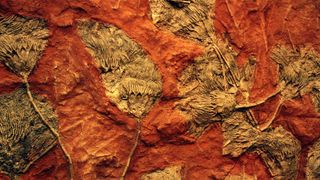Asteroid that wiped out the dinosaurs allowed flowers to thrive in a post-apocalyptic world
Scientists have discovered flowering plants were largely unscathed by the Cretaceous-Paleogene (K-Pg) mass extinction event 66 million years ago, allowing them to take advantage of the new, dinosaur-free planet.

The giant asteroid that snuffed out the dinosaurs at the end of the Cretaceous period (145 million to 66 million years ago) left flowers relatively unharmed, and the blooms thrived in the aftermath, a new study has found.
Earth lost three-quarters of its species, including all non-avian dinosaurs, when an asteroid struck Mexico's Yucatán Peninsula 66 million years ago. Scientists call this cataclysmic period the Cretaceous-Paleogene (K-Pg) mass extinction event.
New modeling reveals that, despite widespread devastation, the major families of flowering plants, called angiosperms, were adaptable enough to survive the deadly event and reap the rewards, according to a study published Sept. 13 in the journal Biology Letters.
"After most of Earth's species became extinct at K-Pg, angiosperms took the advantage, similar to the way in which mammals took over after the dinosaurs, and now pretty much all life on Earth depends on flowering plants ecologically," study lead author Jamie Thompson, a postdoctoral evolutionary biologist at the University of Bath in England, said in a statement.
Researchers have a hard time identifying flowering plants in the fossil record; most of the record is made up of isolated leaves that aren't attached to other plant organs, according to a 2008 study in The Paleontological Society Papers journal. There's evidence for flowering-plant extinctions following the asteroid strike, but not for widespread decline as in other types of organisms.
To learn more about how flowering plants responded to the K-Pg extinction event, the authors of the new study looked at major flowering-plant lineages previously mapped from DNA mutations of thousands of species.
Sign up for the Live Science daily newsletter now
Get the world’s most fascinating discoveries delivered straight to your inbox.
They used mathematical models to estimate that flowering plants experienced a relatively stable extinction rate over time, with no evidence of a mass extinction. That means that while individual species were lost during the event, the larger family groups survived, according to the study.
Most of the flowering-plant families we see today emerged before the K-Pg event, with the ancestors of modern orchids, magnolias and mint living alongside the dinosaurs. Following the K-Pg extinction, the surviving flowering plants spread and diversified.
"Flowering plants have a remarkable ability to adapt: they use a variety of seed-dispersal and pollination mechanisms, some have duplicated their entire genomes and others have evolved new ways to photosynthesise," study co-author Santiago Ramírez-Barahona, a researcher at the National Autonomous University of Mexico, said in the statement. "This 'flower power' is what makes them nature's true survivors."

Patrick Pester is a freelance writer and previously a staff writer at Live Science. His background is in wildlife conservation and he has worked with endangered species around the world. Patrick holds a master's degree in international journalism from Cardiff University in the U.K.
-
kclowers The current image on this article is not an image of flowers, or even plants. Those are crinoids... you know, animals related to sea starsReply
Most Popular



